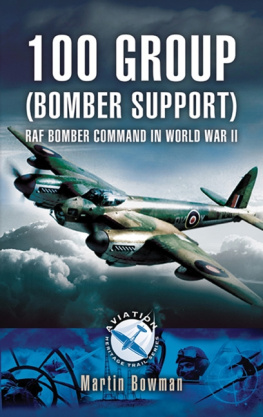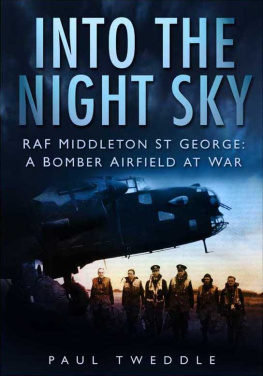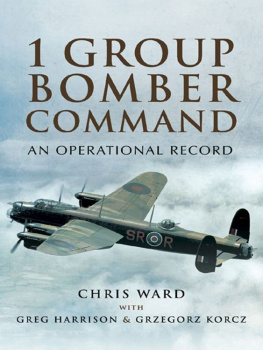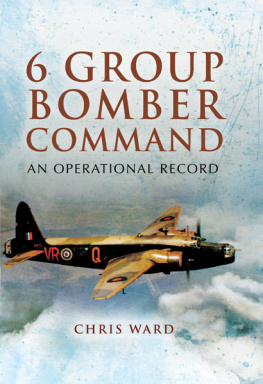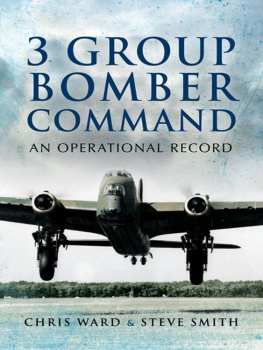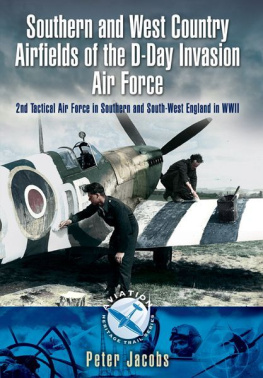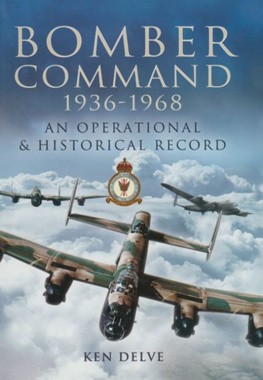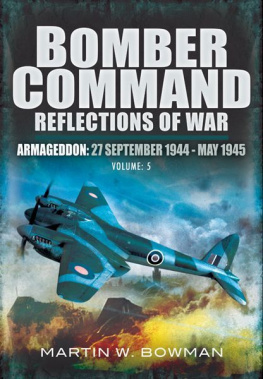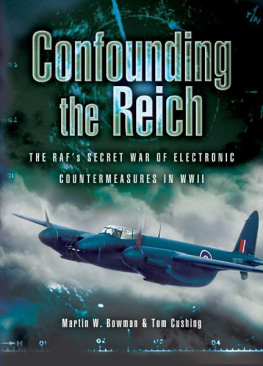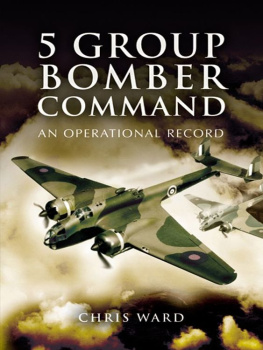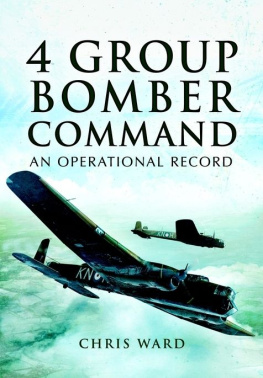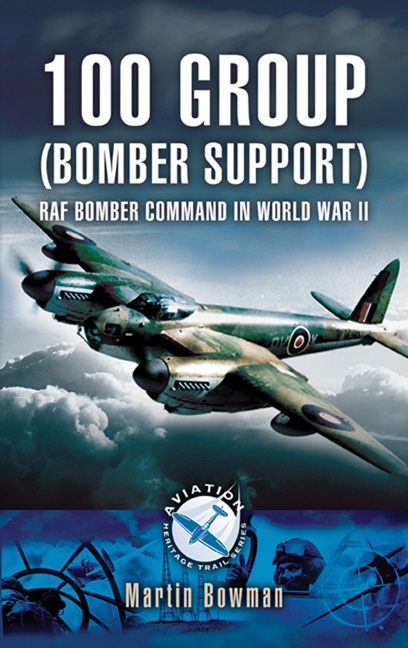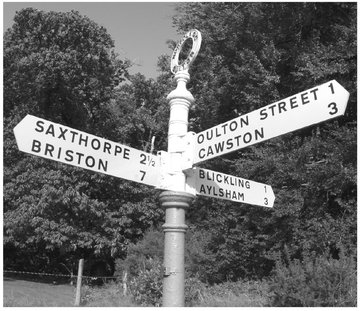ACKNOWLEDGEMENTS
This is where I came in. Back in the late 1960s and early 1970s my friends and I would visit airfields in Norfolk, especially the more accessible ones immediately surrounding Norwich and there are many ostensibly to look for bits of wrecked aircraft. I soon tired of this, but my interest in aviation matters increased a hundredfold with the discovery, like some modern day Howard Carter (who once resided in Norfolk), of a multitude of artwork adorning the walls of the old barrack huts, Nissens and other buildings on the ex-RAF airfields and American bases. In 1971 this interest prompted me to compile books on the units stationed at every airfield in the region and Fields of Little America was first published in 1977. I could not foresee that I would be retracing these same steps twenty-five years later! A Kodak Instamatic was not the best means of capturing the paintings, cartoons and pin-ups, but in the late sixties it was all I had and buying film was not cheap for a teenager. After all, the artwork would still be there for a few years would it not? It had survived the ravages of time for almost thirty years so it seemed reasonable that a return trip could always be made to photograph the prize exhibits in the future. But of course other things got in the way, time moved on and impatient farmers and developers decided that their need was greater. Most had no love of history, having seen their vast acreages requisitioned during wartime and their landscape changed for ever with runways, perimeter tracks and huts of every description. Their only bonus was to take over the old wartime hangars and buildings and put them to use for storing grain, combine harvesters and whatever else that is grown and reaped in the Norfolk fields. Peri tracks and runways were largely ripped up to provide more arable land for growing crops with only the bare minimum of concrete left standing to take a tractor or combine harvester.
Some individuals, notably Tom Cushing at Little Snoring, do have a sense of history and having grown up in the area during the war decided to preserve as much of their airfields as possible. Tom later organised a superb museum on his land adjoining the airfield, which commemorated many of the men and women of 23, 169, 515 and 115 Squadrons. I was honoured to acknowledge Tom Cushings contribution in the book Confounding the Reich , which features detailed research and interviews and photos of all the 100 Group stations and locations from November 1943 to May 1945.
Norfolk people probably take the countys rich history and highly arable land with its inland waterways and coastline teeming with bird-life for granted, but its wide open spaces have been fought over for centuries. Now, day-trippers from near and far and holidaymakers from overseas have replaced the warlike hordes of Scandinavia who added Old Norse to the broad Norfolk dialect and introduced many names to the geography of the region. Norwich is at the hub. A magnificent cathedral and proud castle dominate the skyline. During World War Two Norwich sadly did not escape widespread destruction on occasion. Allied personnel stationed in the county came to love the area and some stayed to put down roots. Now the countys rich heritage is under siege from developers and the ravages of the North Sea. At Hunstanton, there is a memorial listing all those killed in the North Sea floods of 31 January 1953. It includes seventeen American airmen from RAF Sculthorpe.
I am enormously grateful to the following people for making it possible to include detailed information in this book. Dr Theo Boiten provided enormous expertise on victories and details of German crews. Bob Collis unstintingly provided his customary expertise and furnished much valuable information on aircraft and crews, often in very detailed and painstaking correspondence. I am no less grateful to the following for their marvellous help and support throughout: Michael Allen DFC **; Jim Avis; Molly Baker; Len Bartram; Derek Taffy Bellis DFC *; Philip J. Birtles; Eileen Boorman; Les Bostock; Bill Bridgeman; Squadron Leader Joe Cooper AFC; Ernie Frohloff; Air Vice Marshal Jack Furner CBE, DFC, AFC; Peter B. Gunn; Terry Groves; Alan Hague, Curator, Norfolk & Suffolk Aviation Museum; Gerhard Heilig; Leslie Dutch Holland; Mervyn Hambling; Sister Laurence May; W.H. Miller DFC; Mosquito Aircrew Association; Simon Parry, Murray Peden DFC QC; Eric Phillips; Don Prutton; Harry Reed DFC; Wing Commander Philip Russell DFC; Jerry Scutts; Group Captain J.A.V. Short MBIM; Group Captain E.M. Smith DFC* DFM; Martin Staunton; Graham Chalky White; Squadron Leader R. G. Tim Woodman DSO DFC; Johnny Wynne DFC; Philip Yaxley.
APPENDIX I
SUMMARY OF THE AIRFIELDS & OTHER LOCATIONS
BLICKLING HALL
Blickling, Norwich NR11 6NF (tel: 01263 733084, fax: 01263 734924). Description: Billet for 2 Group and 100 Group personnel in World War Two. Location: 1 mile west of Aylsham on B1354 Aylsham to Saxthorpe road signposted off the A140 Cromer Road.
Directions: If visiting Oulton, carry on through the village past the memorial to the first T-junction and turn right. Travel along the B1354 Aylsham to Saxthorpe road. From Aylsham, head along the B1354 towards Saxthorpe. Blickling Hall is on the right.
Comments: Whether you are an aviation enthusiast or not, no visit to Norfolk is complete without a visit to one of the greatest houses in East Anglia. On a fine day a walk around the lake, which was once used by RAF airmen in simulated dinghy drills, set in the 4,777-acre estate, is well worth completing. The Hall also looks particularly impressive at night. Apart from an RAF museum in the outbuildings of the hall, other highlights include a spectacular Jacobean plaster ceiling in the long gallery; eighteenth and nineteenth century furniture collections; a distinguished library of 12,000 books; a tapestry of Tsar Peter the Great; a formal woodland wilderness garden with daffodils, bluebells, azaleas and rhododendrons; a secret garden with summerhouse and scented plants; Victorian parterre garden with herbaceous borders; mature yew hedges and topiary; woodland walks/plant sales; a shop; and a restaurant and a tea-room with childrens menu. Finally, if the lakeside walk and a day spent touring airfields is too much, then the Buckinghamshire Arms immediately next to the Hall offers hotel accommodation, a bar and four-poster-bedded rooms!
Map of the Blickling estate. Author
Signpost showing Oulton airfields proximity to Blickling Hall. Author
Opening Times: House: 4 April to end of July Wednesday to Sunday and bank holiday Monday 1-4.30 pm; September to November Wednesday to Sunday 1-4.30 pm. Last admission 4.30 pm. Garden: same days as house 10.30 am to 5.30 pm (gates close at 6 pm) and open daily 1-30 August, 2 November to 31 March. Sundays only 11am to -4 pm. Park and woods: open daily all year dawn to dusk. Lunches and teas in restaurant: 4 April to 1 November when house and garden are open 10.30 am 5.30 pm; 2 November to 20 December, Thursday to Sunday 10.30 am to 5.30 pm.
BYLAUGH HALL
Description: HQ for 2 Group and 100 Group in World War Two. Location: Off the B 1147 road towards Lyng and Elsing, near Swanton Morley airfield.

